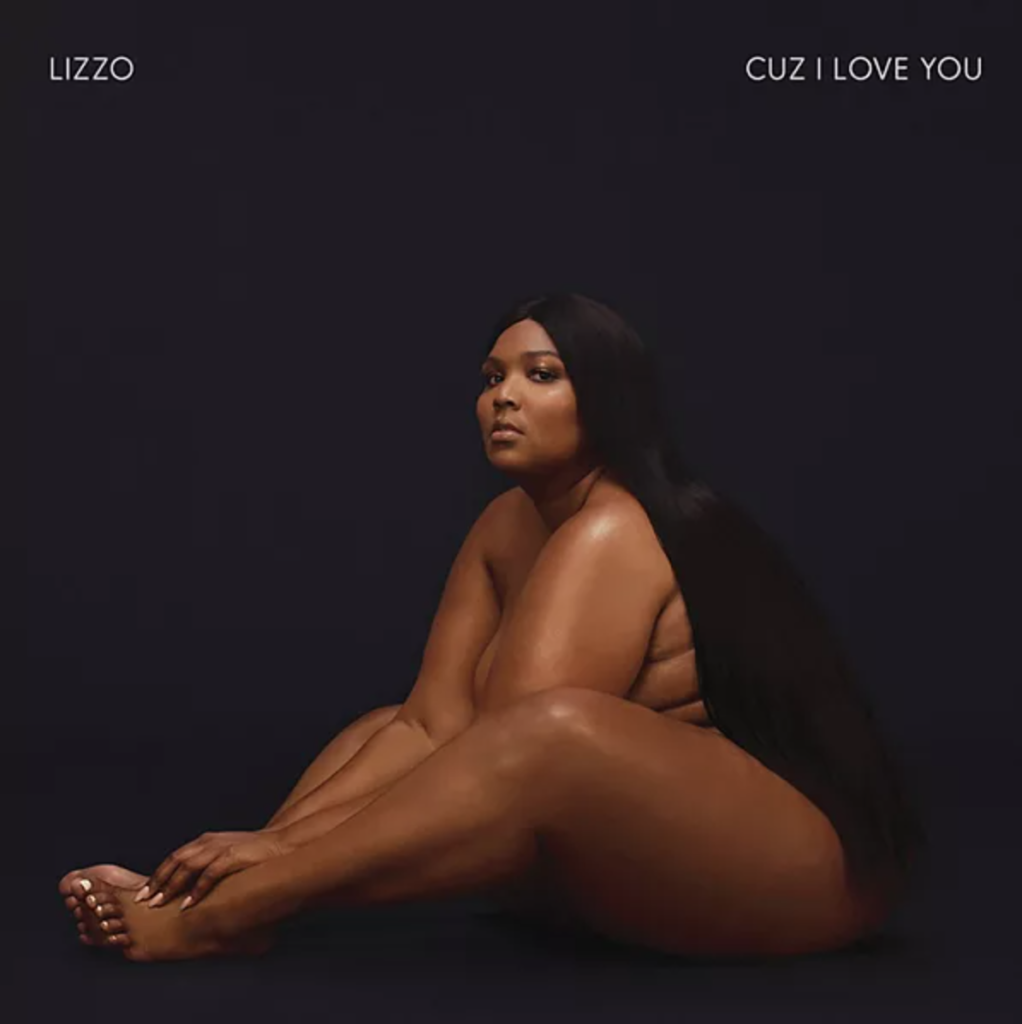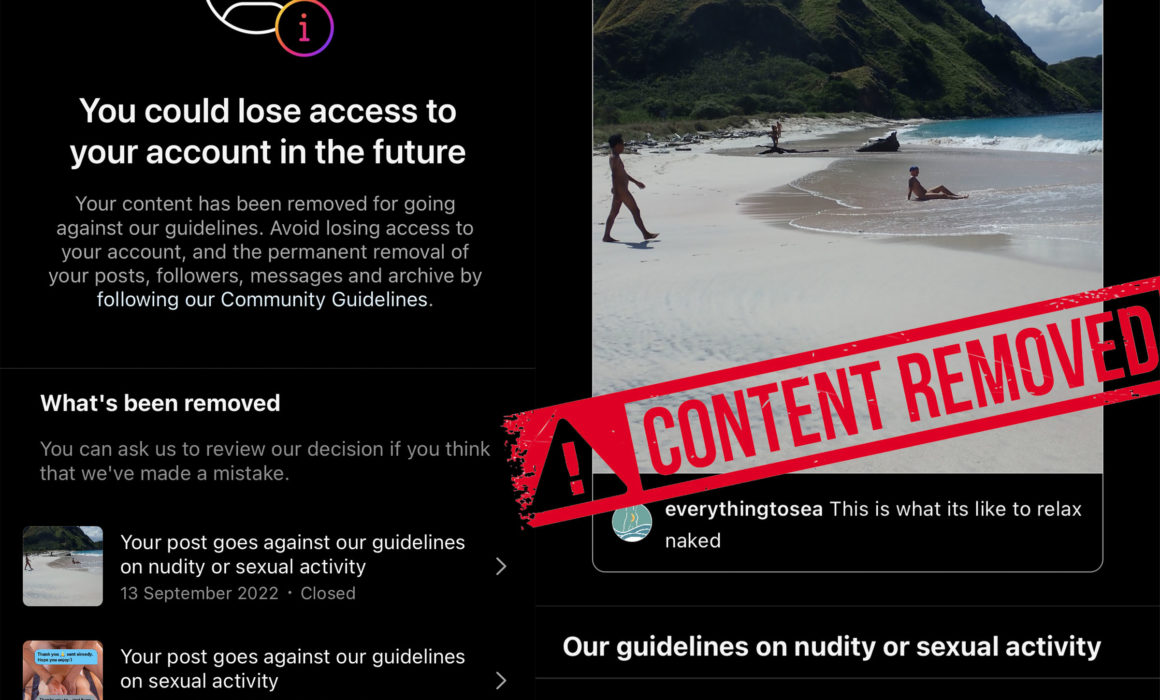On Social Media, Sex Sells, Nudism Doesn’t
You might think that posting images from our trips is a simple thing to do, but in fact, it’s pretty darn complicated. It may seem that our social media and website are rather conservative, considering we’re a nudist company. That’s because we’ve had our fair share of issues, including having Instagram photos flagged and taken down, and having our social media accounts shadow-banned. There’s lots of grey area in terms of what body parts we can and can’t show, which can differ with each platform. For example, we can’t show a bumcrack on our website (though, we can show a bit of side cheek), or else we’ll be penalized in our Google search results. That’s the nature of being a naturist company in a world that can’t seem to wrap its head around non-sexual nudity. In this blog post, we’re sharing an excerpt from the Planet Nude substack, written by nudist historian and podcaster Evan Nicks. Read on to learn about the “algorithmic amplification of body shame.”

Social media algorithms have come under scrutiny for their biases and the ways in which they influence the content that users see, such as the ways they inadvertently amplify conspiracy theories or extremist content, as we have seen in the news in recent years. Yet there are a myriad of other ways in which these biases shape our experiences and behaviors online, and not all of them have been broached by anchors on CNN.
One that nudists and artists have become all too familiar with is the bias against nonsexual nudity, and the double standard these platforms create by simultaneously promoting highly sexualized images, clothed or not.

Social media algorithms are designed to prioritize content that is likely to receive a high level of engagement. This means that sexualized images are more likely to be shown to users, even if they do not want to see this type of content. One result is the normalization of these sexualized images, and the stigmatization of normal human nudity. Most people are not even as offended by a highly sexualized, misogynistic watch ad as they are by the sight of an adult nude man.

Yes, the above image is a real ad from watchmaker Watch Anish.
Even if you create a brand new account on most social media sites, even if you don’t follow anyone else at all, the algorithms will automatically inundate your feed with high performing posts and ads portraying items of varying levels of luxury next to scantily clad, next-to-naked models with unrealistic physiques, galavanting in glamorous locales, posed and photoshopped to be artificially tantalizing and envy-inducing in every way. These sorts of images are the stock and trade of social media platforms.
Nonsexual images of natural bodies unposed in candid environments are truthful, and therefore rarely tick the necessary boxes to make life look sexy or glamorous. Yet they still can shock the puritan-minded, and offend others who do not share the nudist’s liberal views of the human body. To the profit-inclined social media corporation, a nude that’s not sexy is like a poison-tipped sword. Sex sells, but truth doesn’t.

Perhaps the worst offender of the lot is Instagram, which has a policy against “nudity, pornography, and other sexually suggestive content.” While this policy is understandable in the context of protecting users from explicit or inappropriate content, it also conflates all nudity with pornography, serving to unfairly and disproportionately disadvantage any level of expression that includes even a modicum of natural human nudity. A person breastfeeding their child may be removed, while highly sexualized images of women’s bodies are often allowed to remain on the platform just so long as their nipples or vulvas are barely obscured.
Yes, this double standard is unfair. But far worse is the damage it does to reinforce harmful societal norms and promote the notion that nonsexual nudity is shameful or inappropriate. It has a profoundly negative impact on self-worth, as people may feel pressure to conform to a narrow standard of what is considered acceptable. And yet, the algorithm rewards non-nude sexual images with a bounty of interactions and “likes”. This foments as pressure on people—especially young people—to put forth an image of themselves that is manipulated and distorted to attract this specific kind of attention.

Still, the work to find all of these solutions rests on the shoulders of the social media companies, who have repeatedly demonstrated that their interests are in procuring profits, and are seemingly unreachable and untouchable—at least to those of us who are not billionaire businessmen with a great deal of political influence. Does the average person have any recourse at all?
I believe there are a few things that individuals can do to try and change the way that social media algorithms treat non-sexual nudity. They are small-but-mighty actions, in a sort of David/Goliath battle for freedom of expression online, but I believe that with some hope and no small amount of effort, we can win. Isn’t that what David and Goliath is all about?

First, it is important for people to speak out about this issue and raise awareness about the biases that these algorithms contain. This can be done through social media posts, blogs, and other forms of online content that highlight the double standard of promoting sexualized images while censoring non-sexual nudity. By raising awareness about the issue, more people will be aware of the biases and may be more likely to advocate for change.
Second, support social media platforms and content creators that promote body positivity and non-sexual nudity. This includes following their accounts, engaging with their content, and even supporting them financially if possible. By supporting these accounts, people can help to create a demand for non-sexual nudity and encourage social media algorithms to show more of this type of content.

Third and most importantly, people can also advocate for change by contacting social media platforms directly and expressing their concerns about the biases in their algorithms. This can be done through social media posts, email, or even through traditional letter-writing campaigns. That’s an idea. A letter writing campaign! What better way to get the attention of these social media companies than to flood their highly digitized modern workspaces with a torrent of good old fashioned paper letters? It just might work.
Whatever the means, it’s only through making our voices heard that we can lead the push for these social media platforms to make the changes to their algorithms that will create a more inclusive and diverse online environment for all.

Though informative, this article points out some hard truths that shape the world we live in – both online and offline. It’s frustrating for us to accept that although social media perpetuates body shame, we have to rely on these platforms to get the word out about our company. It’s a tough balance. As a body-positive company, it’s ironic: we work within the constraints of each platform to share images that represent what we believe in – nudity as a means for social connection.
One of the few places where we ARE able to show full-on nudity to the masses is through our own Nude Newsletter, which isn’t subject to draconian policies.
Have you ever had an issue sharing images online? Where do you go to see nudism-related content? Let us know in the Comment section below.


Very interesting article. I wasn’t aware of the depth of the bias. Thanks for making it more apparent.
I find this a good choice for information.